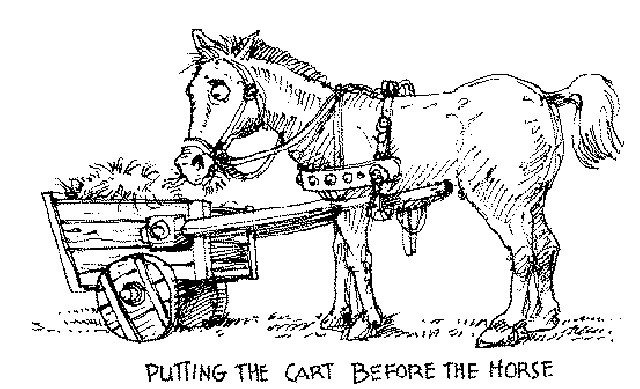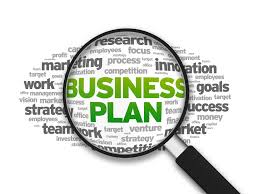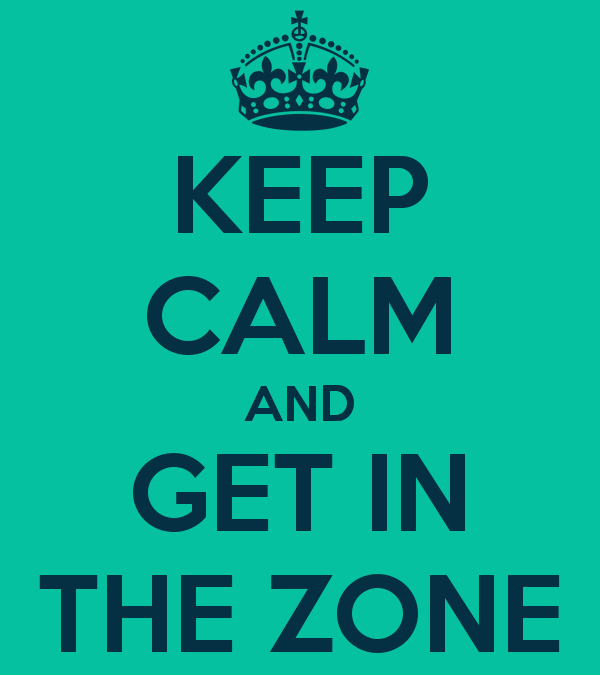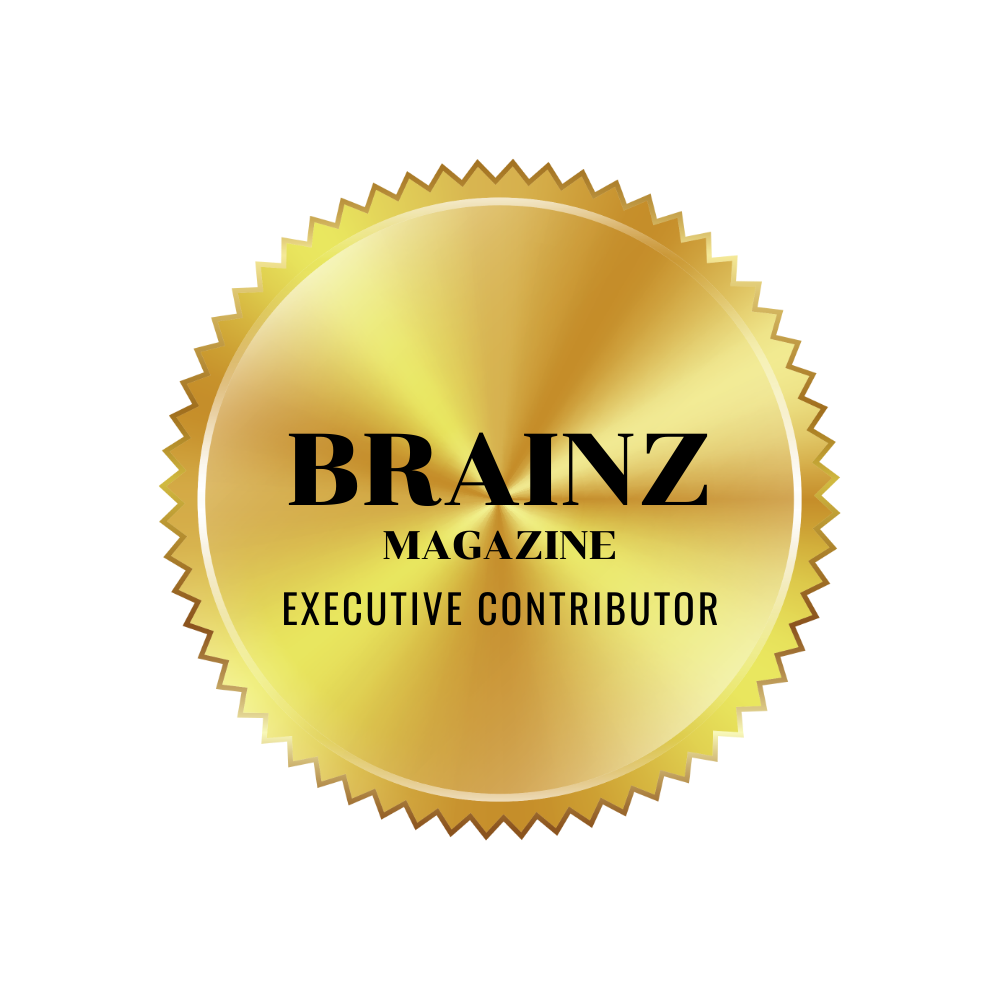
by Julia Felton | Jan 7, 2015
As we kick start the New Year a great question to ask yourself is what will you do differently this year? This is something I have been asking myself over the Christmas holidays and I already have some cool plans in place to make some changes.
Changing the way things are done can bring opportunities for great success. But reaction to change may be fearful and irrational, which can result in failures, a decrease in quality and a loss of production? When it comes to work and business, it can be tempting to give in to those anxieties by doing what’s always been done. But priming the pump to have a better year always involves some form of adjustment to free up the time, money and energy to tackle new opportunities.
How do you decide what changes are the most important ones to make?
Ask yourself these questions:
- What personal and business tolerations interfered with personal and work progress? Tolerations are a good indication of issues in need of resolution?
- Were last year’s goals reached? Why or why not? How will those obstacles be addressed? Setting new goals without having evaluated the previous year’s goals can result in a cycle of substandard results?
- What fiscally responsible goal (making more money, collaborating, creating new products/services, improved marketing strategy, etc.) will also be fun? All work and no play makes Jack a dull (and bored) boy, as the saying goes.
What do you need to change to have a better year?
Choose passion over profit. Connect to your bigger purpose in life, work and business and the rewards will flow effortlessly. Passionate people attract success?
Higher learning. Technology changes fast. Staying on top of what’s working now is only half the battle. Discovering what’s up and coming and leveraging that knowledge is the key to an exceptional year?
Celebrate success. Acknowledging and rewarding success keeps everyone motivated. Mark those mini-milestones with celebration and recognition!
Add, don’t subtract. When repeat clients stop buying your products or services, something needs to change. Instead of cutting prices, add value instead–bundle existing services/products, add bonuses or create new offerings.
What are your blind spots?
Every driver has blind spots. That’s what rear-view mirrors are for. Blind spots in the work and business environment can be harder to identify. How does a person avert disaster in a work environment without the benefit of mirrors?
Ask around. Getting honest feedback from clients, customers and service providers can be as uncomfortable as it is invaluable. Do it anyway?
Seek professional help. Getting an objective outsiders opinion can help you see what is going well or not?
Coffee time. Chat up a colleague and encourage them to share their observations about what you are doing well and what needs improvement. Sometimes what needs to change is missed because it is so “obvious.”
Moving into a New Year doesn’t have to be a scary proposition. Having a clear sense of what’s ahead can circumvent failure and create a successful year. And if you want some help identifying your blind spots just apply for one of the limited, complimentary Accelerate Your Success sessions that I offer every month. You’ll be glad that you did.
Julia Felton (aka The Business Wrangler) is the founder of Business HorsePower. Business leaders, entrepreneurs and executives hire her to accelerate their business performance by harnessing the energy of their people to work more collaboratively together. By aligning purpose with actions the team achieves exponential results as everyone starts pulling in the same direction.
Julia believes that business is a force for good and through designing purpose-driven businesses that leverage the laws of nature, and the herd, you can create businesses founded on the principles of connection, collaboration and community that make a significant impact in the world.

by Julia Felton | Jan 5, 2015
One of the many challenges in business today is the rapidity of change. With so many conflicting demands the difficulty for many business leaders today is that they simply don’t know what to focus on.
For example should you:
- focus on improving your website to get leads?
- spend time on improving customer satisfaction?
- give attention you need to give to securing new clients?
- focus your time on better training your team?
Without any idea about how to prioritize your time you are effectively driving your business blind with no visibility as to what is happening around the corner.
Business leaders are running around like headless chickens re-actively responding to the demands of business rather than leading their businesses to profitable growth. And when this happens business priorities get confused and often result in business leaders putting the cart before the horse.
No where is this more prevalent than in the area of Big Data where time and time again I come across business leaders who are putting the technological demands of the business ahead of the business goals of the organization.
The first thing that all business owners must understand is that any data collected and analyzed MUST align with the business goals of the organization. For far too long IT has driven the decisions on how to deal with Big Data. And yes there are significant IT decisions to consider. But designing business intelligence systems that meet solely technology needs is a huge waste of time and money. Instead I would encourage all business owners to focus on the business needs and then find IT solutions to support this.
However, the data and the business goals are not two separate entities, rather they must be Joined Up so they both integrate and align with the needs of the business. When this happens technology becomes a powerful business ENABLER and not the DRIVER of the business.
If you’d like to learn more about How To Leverage the Power of Big Data in 2015 so that it can support rather than hinder your business, then I invite you to watch this free online training video that I’ve created for you. It’s available at www.businesshorsepower.com/big-data-paradox.
Julia Felton (aka The Business Wrangler) is the founder of Business HorsePower. Business leaders, entrepreneurs and executives hire her to accelerate their business performance by harnessing the energy of their people to work more collaboratively together. By aligning purpose with actions the team achieves exponential results as everyone starts pulling in the same direction.
Julia believes that business is a force for good and through designing purpose-driven businesses that leverage the laws of nature, and the herd, you can create businesses founded on the principles of connection, collaboration and community that make a significant impact in the world.

by Julia Felton | Dec 23, 2014
Numbers are your best friend in business and yet time and time again I come across business owners who are running blind. They simply don’t know the numbers in their business. And since they don’t know their numbers they don’t know if they are on track to achieve their goals or not.
One of the reasons many business owners are not looking at their numbers are that they are afraid of what they might see. But trust me, taking the ostrich approach and sticking your head in the sand is never a great option. Sure, it might work in the short term but in the long term if your business is losing money each and every month you will soon go bankrupt.
Knowing your numbers helps gives you visibility in your business to know what is ahead and based with this knowledge you can make changes. So for example, if your budgeted to make £10,000 in sales this month and three quarters of the way through the month you realise that you have only banked £5,000 then you can take corrective action. For example you could have a sale of your products to generate some additional revenue or could launch a new product or service.
You see knowledge gives you choices about what to do. It helps put you back in the driving seat of your business – fully leading it- rather than the business running you.
Still not convinced. Here are five ways that tracking your numbers will benefit your business:
1. Know how far you are from reaching your goals.
Scores of research prove that individuals and organizations who set goals are much more likely to achieve them. However, to achieve a goal, you must be able to properly measure your progress. By understanding how your business is doing in both revenues and profits daily, you can tell if you’re on track to achieving your goals and adjust your plans as needed if you’re not.
2. Pinpoint and manage key underlying issues.
There are a handful of smaller activities that effect larger results. For example, the following are often key underlying issues for sales:
- Number of outbound sales calls
- Number of live connections
- Number of proposals given
- Proposal close rate
- Average price per sale
When sales are low, most entrepreneurs don’t know what to fix to see improvement. By tracking each of these numbers, you can instantly know what to fix.
3. Discover problems before it’s too late.
Most entrepreneurs have a bad sales month, then look back to determine what caused it. Had the entrepreneur tracked his numbers on the underlying issues, he could have fixed the problem early on. For example, he might have learned that the number of proposals issued in the first week of the month was low, and made sure more proposals went out the door.
4. Quantify success and failure.
By understanding and tracking your numbers, you can measure whether your business is performing well. For example, if your sales team made 500 outbound calls already, your number of customer complaints is less than 10, and your average delivery time is less than seven days, you can rest assured that your business is running smoothly.
5. Offer team members more constructive feedback.
Tracking and publishing your numbers tells team members what’s important. For example, if you track customer satisfaction, number of refunds, and average customer hold times, your customer service manager knows precisely how he is being judged and what to improve.
One final thought. Don’t just look at your numbers to determine what needs fixing. Use them to pinpoint what’s working well in your business and do more of that. A great tool is to create a business intelligence dashboard that contains all the key metrics that you need to run your business in one place.
Remember: what you measure you treasure. So if you really want to start making more money in your business start paying more attention to the numbers on a daily basis. You’ll be so glad that you did.
And if you’d like help to Accelerate Your Business Profits then please request a complimentary strategy session. I offer a limited number of these each month so apply for one here
Julia Felton (aka The Business Wrangler) is the founder of Business HorsePower. Business leaders, entrepreneurs and executives hire her to accelerate their business performance by harnessing the energy of their people to work more collaboratively together. By aligning purpose with actions the team achieves exponential results as everyone starts pulling in the same direction.
Julia believes that business is a force for good and through designing purpose-driven businesses that leverage the laws of nature, and the herd, you can create businesses founded on the principles of connection, collaboration and community that make a significant impact in the world.

by Julia Felton | Nov 26, 2014
Most business owners and entrepreneurs I know don’t plan to fail in their businesses – let’s face it who wants to fail – and yet with 1 in 3 business failing in their first year this is the position many people find themselves in.
And if you have survived the first year, congratulations, but beware because only 50% of those of you who survive the first year will make it through the next four years.
Scary isn’t it.
So what is the the number one cause of this failure? According to Dun & Bradstreet, the primary cause is lack of business planning.
Yes, entrepreneurs and business owners don’t plan to fail. Rather, they fail to plan (which causes them to fail).
To my mind, there are two types of business plans. The first is the business plan you must create when you start your company. The purpose of this plan is to ensure you have fully thought through your venture.
Among other things, this plan includes significant market research. It assesses your market size to ensure the opportunity is big enough. It analyzes customer segments to confirm that customer needs match your company’s proposed product and/or service offerings. And it analyzes the competition to determine how your company will position itself and how you will most effectively compete.
From a strategic standpoint, the business plan must document your marketing plan (how you will secure customers), your human resources plan (who you will hire) and your operations plan (what key milestones you will accomplish and when).
When you’re done, your business plan will confirm your market opportunity and give you a roadmap to follow. It will also be required should you wish to gain funding from investors and lenders.
Now, once your business is up-and-running, you still need a business plan in order to succeed. I refer to this type of business plan as a “strategic plan.” I term it as such because this type of plan requires much less research (since you already know who your customers are, the market fundamentals, and lots of information about your competitors). Rather, the focus of this plan is strategy.
Specifically, this plan needs to identify precisely:
- Where you want your company to be in five years
- What you need to accomplish within the next year to progress you to that point, and
- What your strategy is to complete your key milestones in the next 12 months
It is also useful to undertake a SWOT analysis so that you are clear on your company’s strengths, and opportunities and how best leverage them.And so you are not blind sided you also need to be consciously aware of your company’s weaknesses and where the potential threats might lurk.
I like to keep this strategic plan short (often just one page) and the Growth Accelerator Orbit Plan is a great tool to use. It helps detail on one page your 3-5 year plan in all the key areas of your business. Seeing everything on one page enables you to easily understand how all the different parts integrate in order to create a Joined Up Business. Many of my clients find that armed with this information their original plan does not compute. For example they have not planned for sufficient resource to deliver the revenue targets. Clearly seeing this means that corrective action can be made now before it is too late.
If you don’t take time to do this, you become too tactical. That is, you continue to use the same tactics that have gotten you to the point you are at. And oftentimes, the strategy and tactics that got you where you are today are NOT the strategy and tactics that will get you to the next level.
Creating a business plan when you start your company, and annually creating strategic plans to grow your company is absolutely essential to your success. Research proves it. So, if you want to avoid failure, and achieve maximum success, make sure you are continuously creating, updating and following your business and strategic plans.
Currently there is funding available through Growth Accelerator to help businesses develop both their business and strategic plans, so if you are interested in finding out how I can help you access this funding and create these plans for you then please get in touch – julia@businesshorsepower.com.
Ensure your business success in 2015 by planning for it.
Julia Felton (aka The Business Wrangler) is the founder of Business HorsePower. Business leaders, entrepreneurs and executives hire her to accelerate their business performance by harnessing the energy of their people to work more collaboratively together. By aligning purpose with actions the team achieves exponential results as everyone starts pulling in the same direction.
Julia believes that business is a force for good and through designing purpose-driven businesses that leverage the laws of nature, and the herd, you can create businesses founded on the principles of connection, collaboration and community that make a significant impact in the world.

by Julia Felton | Nov 19, 2014
“There’s no such thing as a self-made
millionaire. Only TEAM-made millionaires”
Teamwork is to my mind the most effective way in business to create success. Being in business is tough and there is simply no way that you can do everything by yourself. Each of us has own our brilliance and working with team members enables you to focus on your brilliance whilst letting others do theirs. The net effect is that everyone is in a state called flow, which is the state of least resistance. Then business becomes easy and fun.
But how do you get the best out of team members and inspire them to give of their best to help your business grow and be successful.? The answer is to ask better questions. So are you a teller or a questioner?
In other words, when you’re working with your team members (or outsourcers) do you tend to tell them what to do or do you engage them in a conversation by asking questions?
If you’re like most entrepreneurial leaders, chances are you’re the former. If that’s true, then my question to you is “How’s that working for ya?”
My guess is it’s not working out as great as you’d like it to. In fact, I find that most entrepreneurial leaders are pretty frustrated with the people they’re “leading.” See if any of the following statements ring true for you
- “They never do what I tell them to do!”
- “It always takes her ten times longer to do what I asked her to do. If she’d just listen to me, she could get it done in one tenth of the time it’s currently taking!”
- “I can’t understand why it’s taking him so long to do what I asked him to do.”
- “I can’t figure out why she just can’t follow my directions.”
- “I didn’t hire him to think. I hired him to do what I tell him to do.”
Ouch! And I fully understand those sentiments. As an entrepreneurial leader myself I understand why you want people to do what you want them to do in the way you want them to do it (after all, you are the BOSS, right? And it is YOUR company. And you do pay THE BILLS. And they do work for YOU, right?).
Furthermore, I get the whole driven part of the entrepreneurial personality. According to Talent Dynamics I have lots of dynamo energy so, by personality, I like being a teller. I like saying, as chances are you do, “Here’s what I want you to do. Now, just go do it. No questions. No debate. Just get it done EXACTLY how I told you to do it.”
But, as you well know, that approach doesn’t produce the best results
The Problem With Being a Teller
What I learned, and hopefully you are as well, is that being a teller is a counterproductive leadership approach. Why? For a number of reasons. I’ll give you three.
1. Telling doesn’t create buy in. As you know, people own what they help create, which, by definition means they don’t own what they don’t help create. So, if you or I say, “Billy, I want you to do X in Y way,” how much does he own that? Virtually nil. And if someone doesn’t own a task or project or process/procedure or event or strategy or tactic, the chances of them producing the best result will always be lower than if Billy is involved in creating the solution. Telling doesn’t work because it doesn’t create buy in or ownership.
Note: We’re not talking about following systems here. We’re talking about solving problems or creating something new.
2. Telling doesn’t produce the kind of people you want/need. In other words, if you’re a teller, you’re NOT developing your people to be their best (whether that’s to be a better leader or problem solver or innovator or coach or process person, etc.). Or to put it another way, if you or I are always in the telling position, then we’re not creating independent thinkers. And if we’re not creating independent thinkers, then we’ll have to keep doing all the thinking—which leads to the third reason why you don’t want to be a teller.
3. Telling doesn’t create leverage. If you or I still have to do all the thinking, then we’re not creating leverage. We’re simply creating more work for ourselves. We become the bottleneck to growth. If our people don’t own the task, then we have to invest more time in managing and leading the task. If our people aren’t really excited about a task or project, then more conflict will occur, which means we’ll have to invest more time. Or, if the only people we’re happy with are people who will just do what they’re told, then we’ll always put a lid on the quality of the kind of employee we can hire (which, again, kills leverage).
Any way you add it up, being a teller, just isn’t the smartest leadership choice you or I can make if we want to grow a fast growing business or organization.
The Better Option
The better option, if you want to get the best from your team is to learn to connect, engage and communicate with them. Even if this isn’t your natural bent, you can learn to do this. In fact, the reason I’m writing this post today is because one of my clients said to me this week—when we were discussing an employee situation and I was role-playing out the conversation for him, “Julia, one of the things I appreciate about you is that you’re so good at asking questions. I’m not. That’s just not how I’m wired.”
To which I responded, “Thanks for the compliment, but I’m not wired that way either.” Learning to use questions to lead isn’t a natural ability for most of us, it’s an acquired skill. And it’s not that hard to do on a skill level, it’s only hard on an implementation level. So, here are a few ideas to help you get started on unleashing your inner questioner.
1. Learn to see yourself as a developer of talent, not a boss. At the end of the day, most of us like to be tellers because we see ourselves as “the boss.” When we own the boss hat, most of us like to be in the teller role (I hired you. I pay you. Do what I tell you to do). And as long as we own that mindset, we’ll struggle with asking questions. However, if you can make the mental shift from boss to talent developer, you’ll begin to see your role completely differently (which is key because talent developers create leverage, whereas bosses don’t).
2. Make questioning your first response. I know this may feel pedantic, but when someone asks you a question, ask them a question back. Refuse to just give the answer (something that most of us who are male will always struggle with :-). Instead, when someone asks, “So, what do you think I should do?” throw it back to them, “First, tell me what you think you should do?” If they say, “I asked you first.” Just respond, “Well, how do you think I’d respond?” Return question for question. As hard as this is, don’t give the first answer.
3. Open your team conversations with questions. Instead of saying, “Taraji, we have a problem here. And here’s what I want you to do.” Open the conversation with a wide open question. “Tariji, as you know, we have a problem here. What do you think is creating it?” Or, “What’s your best thinking about how to solve this?” Or, “Do you have any ideas about how we can eliminate this in the next 30 days?”
Yes, there is an art to asking good questions (for example, wide open questions are better for creating independent thinkers), but what’s more important is that you embrace the principle that being a questioner is a better leadership choice than being a teller. Once you do that, you’ll acquire the skill set over time through trial and error. But you’ll never get there if you don’t embrace this concept as a core leadership practice.
So do you? Do you really believe that being a leader who leads through questioning is better than being a leader who leads by telling? I hope so because the choice you make will have profound consequences for you and your company for years to come. So, choose wisely! Remember,
“If you want to get the most from your people, then you need to draw the best that is in them—out of them.”
By the way, if you’re thinking, “But asking questions sure takes a lot more time than telling,” then you probably don’t own the idea that a leader isn’t a boss, a leader is a talent developer who leverages the time, talent, treasures, resources, intellectual property and connections of their people to produce a result.
Oh, and one last thought. This practice is irrelevant to size. It doesn’t matter if you’re leading a two person team or a two thousand person team, the same principle holds.
Go forth and ask better questions.
Julia Felton (aka The Business Wrangler) is the founder of Business HorsePower. Business leaders, entrepreneurs and executives hire her to accelerate their business performance by harnessing the energy of their people to work more collaboratively together. By aligning purpose with actions the team achieves exponential results as everyone starts pulling in the same direction.
Julia believes that business is a force for good and through designing purpose-driven businesses that leverage the laws of nature, and the herd, you can create businesses founded on the principles of connection, collaboration and community that make a significant impact in the world.

by Julia Felton | Oct 26, 2014
If you run your own business I’m sure you are always been told that you need to attend networking events because this is the one of the fastest ways to gain visibility and let people know what you do.
I agree that visibility is vitality important for any business owner because if you are the best kept secret on the planet no-one knows to buy from you. In fact I’ve known many great businesses fail simply because no-one knew about them. Today, however, it is easier than ever to get visibility and let people know what you do.
So then, why doesn’t networking work for most people? The simple reason is that most people spend their time networking telling people WHAT they do. For example, they are a social media consultant, a coach, a trainer or a landscape gardener. You get the idea.
However, people don’t really care WHAT you do they care WHY you do it.
The why is the reason that you went into business and it is what motivates you to get out of bed in the morning and continue on with business even on the toughest days. The why is your driver.
So for example Virgin’s WHY is to change the game and challenge the status quo by providing a product or service of great use. Us shoe retailer Zappos WHY is to make customers happy whilst Disney use imagination to bring happiness to millions.
When people share Why they do something this stirs feelings in the limbic part of the brain – the part of the brain responsible for decision making and behavior. It helps people connect together through shared feelings and emotions. Contrast this with the neocortex part of the brain which is rationale and analytical and is concerned with what we do. The problem is that the neocortex does not drive behavior which is why when you tell people what you do at a networking event they often don’t take any action and help refer business to you.
Networking Neighs is networking group with a difference as the entire focus of the event is on sharing with people WHY you do WHAT you do. Based on the proven formula developed by Emma Taylor of The Bay Horse Speaks the levels of connection that have been built up between the members in other Networking Neighs Groups has been astounding as has the level of business passed between each other.
Forming relationships and connections is vital for business success and really helping others understand more about your own drivers really helps accelerate this process. Plus the event being held at Gallabar Farm, where the mere presence of horses somehow unlocks something hidden within each of us to connect and be seen as who we really are.
You can find out more about the Networking Neighs meeting in Yorkshire here. You’ll also find Networking Neighs in Warwickshire and Sussex
Next time you are at a networking event I challenge you to start sharing with people why you do what you do. You’ll be amazed at the results.
Julia Felton (aka The Business Wrangler) is the founder of Business HorsePower. Business leaders, entrepreneurs and executives hire her to accelerate their business performance by harnessing the energy of their people to work more collaboratively together. By aligning purpose with actions the team achieves exponential results as everyone starts pulling in the same direction.
Julia believes that business is a force for good and through designing purpose-driven businesses that leverage the laws of nature, and the herd, you can create businesses founded on the principles of connection, collaboration and community that make a significant impact in the world.

by Julia Felton | Oct 4, 2014
I’m sure you have all heard the story about the big rocks. It goes something like this. A professor asks his class of students to fill up a jar with some big rocks, small rocks and sand. He gives them no idea of which order to put these three items into the jar. What order do you think works best?
If you put the sand in first then it’s more than likely that you won’t be able to get all the big rocks in, but if you fill the jar with the big rocks first, then the small rocks and finally the sand, if by magic everything fits. I share this story because it is the same in business. You always need to focus on the big rocks and generally these will be the revenue producing activities of your business Do these things first at all cost. Then you can focus on the small rocks and finally the sand
The problem that I see happening to business owners time and time again is that they focus on the sand (tiny activities like social media etc) rather than tackling the big rocks. And the one thing I know to be sure is that you don’t tackle the big rocks first they will never get done
I’ve been having my own experience of this lately as I am writing a new book. Every day I used to say that I would get to the book later in the day, but it never happened. The result was that I was severely behind schedule and my book coach was getting frustrated with me. The only option I had eventually was to start my day writing the book, and guess what, with two concerted weeks of writing I completed the first draft. It feels great. I know there is still lots to do before it can get into production however, it is a major accomplishment for me.
So what was stopping me getting on and writing the book to begin with. Well it was my good old friend procrastination. He is a sneaky scoundrel who has an amazing ability to sabotage my business if I let him. So here are my top tips to defeat procrastination.
1. Set goals. Decide what you want and what needs to happen to get it. Be specific. Create a realistic timetable.
2. Commit. Make a contract with yourself. Tell a friend or co-worker or family member your plan. Ask for help when you need it.
3. Set priorities. Make a list of things that need to be done in order of their importance.
4. Get organized. Have the right tools and equipment to do the job. Make lists. Keep a schedule.
5. Think small. Don’t let the whole of the project overwhelm you. Stay in the present and do what you are doing.
6. Break tasks into parts. The “Swiss cheese” approach to getting any major project completed is to break it apart and work on one piece at a time. Reward yourself when you complete one step.
7. Use positive self-talk.
8. Replace excuses with rational, realistic thinking.
9. Realize there is no such thing as perfection. Begin the thing knowing it can never be done perfectly. You’ll do your best. You always do.
10. Reward yourself. Often and generously for accomplishing the smallest of tasks. Celebrate. Pat yourself on the back. Enjoy your accomplishment.
Like many other self-defeating behaviors, procrastination can be overcome. The place to begin is where you are. If you’d like my help in getting you out of procrastination why not apply for one of the limited number of complimentary Success Breakthrough Sessions that I offer every month. This is a sure why way to motivated and back on track.
Julia Felton (aka The Business Wrangler) is the founder of Business HorsePower. Business leaders, entrepreneurs and executives hire her to accelerate their business performance by harnessing the energy of their people to work more collaboratively together. By aligning purpose with actions the team achieves exponential results as everyone starts pulling in the same direction.
Julia believes that business is a force for good and through designing purpose-driven businesses that leverage the laws of nature, and the herd, you can create businesses founded on the principles of connection, collaboration and community that make a significant impact in the world.

by Julia Felton | Sep 22, 2014
Building any type of business is not easy… if it was everybody would be doing it and success would not come with the financial and spiritual rewards it brings. Pushing through the tough stuff is what makes the difference between the Entrepreneurs and the Wantrapeneurs.
So on your journey of development and growth you’ll need to look out for these potential Roadblocks…that can Stall your Sales, Plateau your Profits and Destroy your Dreams!
1. Not Knowing your IDEAL BUYING Customer – Sounds simple but so many business owners just don’t have enough clarity or detail on the identity of their ideal buyer so they waste money marketing to people who will never buy their product or service. Remember that a “buyer is a buyer and a non buyer is always a non buyer” as Dan Kennedy has said. Take time to evaluate who exactly is buying your products or services and then start looking for ways to find them in large quantities…
2. Not Investing in Scalable SYSTEMS – As I often say to my Coaching Clients if it’s not Scalable your business is not Sale-able should you wish to sell it. Under investment in IT Systems, Sales and Marketing Systems, Delivery Systems or HR & Recruitment Systems will catch up with you and cause your business growth to stop in it’s tracks. Start investing now to build Assets in Systems and Cash always follows Assets and will accelerate your growth going forward.
3. Recruiting the WRONG Talent into Your Team – Yes, as you build your business you’ll need help from other people and not hiring the right talent at the right time can be fatal to your Growth. This is why I am a big fan of Talent Dynamics as part of your recruitment systems to make sure that you attract the right people who will be in “Flow” in the role so you get the most from them and they love getting up and going to work ever day. Not getting professional help when you recruit your team is in my view a huge mistake that costs businesses more time, energy and money than they ever realise until they get it wrong and have to deal with the fall out. It starts by knowing your own Talent profile so you understand who you need around you to magnify your value
4. Lack of a Blue Ocean STRATEGY – As the saying goes “Hope is not a Strategy” and neither does it work for driving growth in your business. You need a clearly defined Strategic Plan that knows where the Blue Oceans are, how to tap into them and what to sell them. Without this your growth will stop as your market becomes more competitive, crowded and red with volume based price competition.
5. Not Developing Your Business and Leadership SKILLS – There is no way around it, as the Leader in your business it will only grow to the levels of your personal skills. As author of the book Jab Jab Jab Hook Gary Vanderbeck says, “If your company is growing 30% a year, you have to be 30% better by this time next year”. Failing to invest in YOU will lead to challenges in Focus, Finances and Future growth. People often ask me what is the key to the success of my coaching clients and it’s a matter of their mind set…they realise that the hidden key to Growth is to Keep Investing in Yourself until you reach your Growth Goals.
Not investing in YOU is a road block if ever there was one. So if you’d like my help to Jump Start Your Business to the next level then just get in touch. I’ve currently got openings for just a few new clients to help them propel their business forward. Will you be one of them? Just email me at julia@businesshorsepower.com and let’s have a chat to see if we are a great fit for each other.
Julia Felton (aka The Business Wrangler) is the founder of Business HorsePower. Business leaders, entrepreneurs and executives hire her to accelerate their business performance by harnessing the energy of their people to work more collaboratively together. By aligning purpose with actions the team achieves exponential results as everyone starts pulling in the same direction.
Julia believes that business is a force for good and through designing purpose-driven businesses that leverage the laws of nature, and the herd, you can create businesses founded on the principles of connection, collaboration and community that make a significant impact in the world.

by Julia Felton | Sep 15, 2014
“If you can conceive something in your mind and believe it to be true, then you can achieve it.” – Napoleon Hill
Napolean Hill said it best when he said, “Whatever the mind can conceive and believe, the mind can achieve.”
But what he said next is even more important and often not quoted. He then goes on to say “…regardless of how many times you have failed in the past or how lofty your aims or hopes may be.”
In his book entitled Think and Grow Rich, Napoleon Hill states that it is scientifically impossible to conceive something in your mind, to believe that you can do it, and then not be able to. The very fact that you can conceive something in your mind, and believe that you can do it, means that you can.
Belief is an ever important aspect of creating a thriving business. If you can imagine it, but you truly don’t believe it, then you will not be able to achieve it. Your worry, doubt and uncertainty will act as a barrier that prohibits your financial goals or any other goals from manifesting themselves.
Most of us have not begun to tap into our true greatness and all that we are capable of achieving. In fact in his book The Other 90% Robert Cooper suggests that as much as 90% of our potential is untapped. Wow. That’s amazing. Just imagine what would happen if collectively we all tapped into some of this. Just think how much more we could all achieve. So do you want to know the secret for unlocking your greatness? It is in your mind.
The power of our mind is truly amazing. Most people doubt themselves. For some it’s occasionally, for others it’s often. We also tend to put other people on a pedestal. The funny thing is that the people we idolize often doubt themselves as much as we doubt ourselves. We all have problems, insecurities and challenges. What distinguishes the truly happy, successful and fulfilled people is how they handle problems and challenges. Belief is the best tool!
The more you believe in yourself and your abilities, the more likely you are to accomplish your goals and reach your dreams.
So what do you need to believe in order to achieve your dreams? If you heard me on SineFM last week you’ll know that one of my favourite songs is Believe by the amazing Orgena Rose. You can download the album and single on iTunes. It’s so inspiring that I try and listen to it every day. Here’s the link in case you missed it.
Julia Felton (aka The Business Wrangler) is the founder of Business HorsePower. Business leaders, entrepreneurs and executives hire her to accelerate their business performance by harnessing the energy of their people to work more collaboratively together. By aligning purpose with actions the team achieves exponential results as everyone starts pulling in the same direction.
Julia believes that business is a force for good and through designing purpose-driven businesses that leverage the laws of nature, and the herd, you can create businesses founded on the principles of connection, collaboration and community that make a significant impact in the world.

by Julia Felton | Jul 22, 2014
Great athletes put the odds in their favor by having a routine that helps them start each day right. Most top athletes go through a preparation routine before every game, which starts long before they get on the field. The best ones usually start the moment they awake.
I have found that the way you start something sets the tone, pace and rhythm for how you will sustain and finish something. This is true for your day as well.
How you START the day will very much dictate how the rest of your day will go. It will set the tone, pace and momentum of your performance for the day.
How you START the day will very much dictate how the rest of your day will go.
So if you are going to rebuild your life and lifestyle around one of health, vitality and high-performance, then you need to start at the beginning with how you start your day.
Many of us are aware that top athletes follow the pattern of a preparation routine with a fierce devotion because it activates all sorts of subconscious and autonomic systems that puts them “IN THE ZONE.”
“In the zone” describes a condition of readiness and awareness that helps prepare that person for success.
As a business owner and leader, you set the pace for the rest of your organization. Your company, even if it has just a few employees, is a reflection of you. Sharpen your company by first sharpening yourself at the dawn of each day.
Here are my top three tips on you can get your body, mind and spirit into “the zone” first thing in the morning.
1. BODY
Coming out of bed, your body needs three things for certain–water, protein and movement. Your systems were all working through the night and need to complete their cycles. Starting with 16 ounces of water gets you started on the eight glasses you already know you need to get anyway and begins the benefits that moving fluids through your body starts.
You need protein in your first food of the day, even if you are going for a run or a workout. A protein shake will do. The rest of the food pyramid is open, but even if you are a very light breakfast eater, protein is important.
Movement gets the blood moving, clears the mind and releases energy. Workouts with weights or cardio are great–but sometimes ten minutes of stretching is all you have time or space for. Regardless, don’t let the first 30 minutes of the day get started without moving.
2. MIND
Your mind needs focus or you will waste time and energy in your morning and in your day. The most effective business owners and CEOs that I know actually focus on very few things. Those that receive their focus, receive all of their focus.
I recently heard of a billionaire who shared that one of his keys to success is accomplishing only one thing per day. A very big thing, of course, but from the moment he wakes up until he finishes his day, he throws every available effort at that one thing. Most of us measure our days in volume, not in scale. How many things can we check off on our to do list, rather than how important one particular thing might be. Pick the one BIG thing to accomplish and let your morning open up with that as the focus for your first thoughts.
3. SPIRIT
Part of putting yourself in the zone is achieving alignment of your core energy and your positive emotions. A proven way to do this is through a simple reflection of gratitude. Being grateful, aware of all you have, is a centering action. It starts your day with energy and calm. When you greet your employees, clients, and suppliers throughout the day knowing that you included them in your reflections, they will feel that in your interaction and it will make for a better exchange regardless of the circumstances.
So remember, if you want to be a top performers in your field, put the odds in your favor by putting yourself in the zone first. Then you allow others to follow your lead.
Julia Felton (aka The Business Wrangler) is the founder of Business HorsePower. Business leaders, entrepreneurs and executives hire her to accelerate their business performance by harnessing the energy of their people to work more collaboratively together. By aligning purpose with actions the team achieves exponential results as everyone starts pulling in the same direction.
Julia believes that business is a force for good and through designing purpose-driven businesses that leverage the laws of nature, and the herd, you can create businesses founded on the principles of connection, collaboration and community that make a significant impact in the world.
















